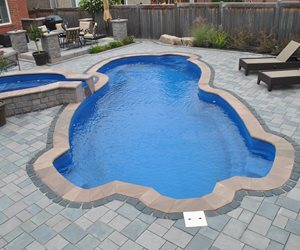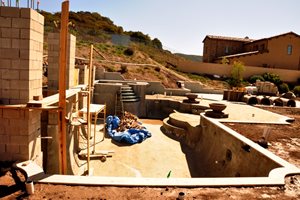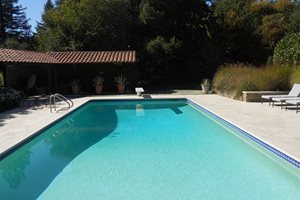Fiberglass Pools
Discover the benefits and limitations of fiberglass swimming poolsNew materials and technologies are behind a thriving market for hard shell fiberglass pools. The industry has also grown up during the last two decades as it expanded design options and improved strength and longevity of this product. In fact, today's fiberglass pools are 17 times stronger than a gunite pool, and less prone to cracking under less than ideal soils.
-
Pro Tip:
Swimming pools constructed near home foundations in expansive clay soils are frequently sources of damaging moisture. Such swimming pool shells are typically constructed of air-blown mortar (gunite). The gunite skin of a swimming pool is rarely designed for swell pressures generated by expansive clays. Furthermore, in all swimming pools the water percolates through the shell and adds significant amounts of water to adjacent soils. Since pools are generally in arid climates, this creates a moisture differential which can be severe enough to differentially lift adjacent pool decks and house foundations. It can lead to destruction of the pool itself. ----DAMAGE TO FOUNDATIONS FROM EXPANSIVE SOILS
J. David Rogers, Robert Olshansky, and Robert B. Rogers
Soil conditions are behind the popularity of fiberglass pools in the Atlantic Coast states as well as throughout the South. In many cases a fiberglass pool becomes a welcome problem solver for poorly drained sites. Per the quote above, regions with very dense clay soils can be problematic for gunite pools, causing cracking due to the extreme rates of expansion and contraction. This applies to very cold climates as well, where the changes due to freeze-thaw create similar challenges. Very sandy soils are at a risk of liquefaction, particularly where there is a high water table which eliminates the option of a vinyl lined pool.
Rapid installation and low maintenance are the two most common reasons people choose fiberglass pools. The average installation time for a gunite pool is 45-60 days, a vinyl lined pool 35 days and a fiberglass pool just 10 days. Note, these times may vary in problem sites. Fiberglass is far more resistant to algae and staining so the need to treat water is minimized. Installation cost is about the same as an average gunite, but again, the construction time for fiberglass is lessened.
Largest Models from Major Manufacturers
Leisure Pools: Grande (16’x40’ Rectangle)
Viking Pools: Island Breeze II (16’x40’ Rectangle)
Trilogy Pools: Atlas (16’x40’ Rectangle)
San Juan Pools: Luxor (16’x44’ Rectangle)
Barrier Reef Pools: Whitsunday 1 (15’8’’x40’ Rectangle)
American Fiberglass Pools: Frio (18’x43’)
Is Fiberglass Right For You?
The chief reason people don't choose fiberglass is that it's not customizable. These pools are precast shells that must be moved along highways, which limits size and depth. The maximum width is just 18 feet as shown by the list of major manufacturers and their largest pool models to the right.
Cost
Fiberglass Pools cost more to install because a fiberglass shell is more expensive than a vinyl liner. Shipping a large pool requires large trucks and a wide load surcharge, and with gas prices rising, this can really add up. A rough estimate for a fiberglass pool shell and its shipping charges can range from $12,000 to $25,000 depending on the size of the pool. Contractor installation of the pool without deck is $20,000 to $40,000. These numbers will rise significantly when you add a heater, lights, water features, pool deck and other accessories. For a more realistic evaluation of cost, note the chart below which details how much you spend after installation for various kinds of pools to keep them water tight, functional and beautiful.
10 Year Pool Maintenance Cost Comparison
| Action | Fiberglass | Vinyl Liner | Concrete |
|---|---|---|---|
|
Acid wash pool shell (3-5 yrs) |
0 |
0 |
$900 |
|
Pool cleaning service |
0 |
0 |
$5,000 |
|
Replaster (7-10 years) |
0 |
0 |
$15,00 |
|
Replace liner (5-9 years) |
0 |
$4,500 |
0 |
|
Chemical usage |
$1,750 |
$4,000 |
$7,500 |
|
Electricity |
$4,000 |
$8,000 |
$12,000 |
10 Year cost of ownership. |
$5,750 |
$16,500 |
$40,400 |

 Backyards
Backyards
 Front Yards
Front Yards






